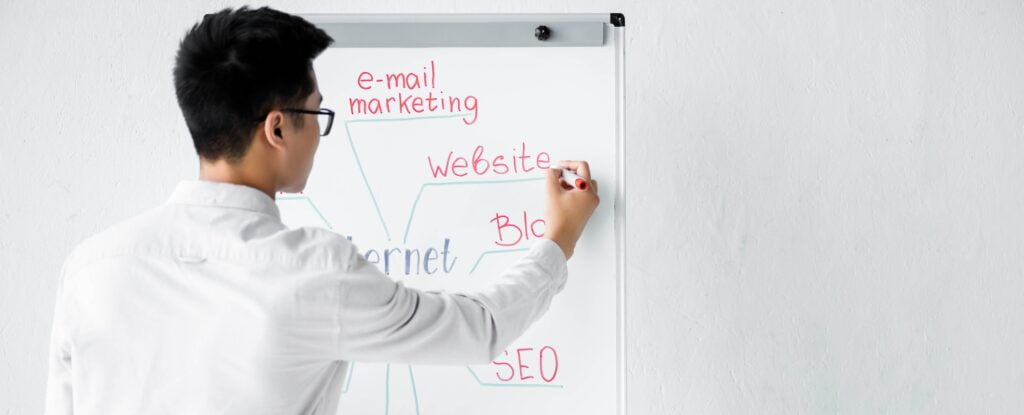1. Introduction to WordPress Themes
WordPress themes are the backbone of your website’s design and functionality. A WordPress theme dictates the visual appearance, layout, and overall user experience of your site. It’s the foundation upon which your content is displayed and the way users interact with your brand online. Given that first impressions are often visual, selecting the right theme is crucial for establishing your business’s online presence.
The Importance of Choosing the Right Theme Your theme is more than just a design element; it’s a vital component that influences how your audience perceives your brand. The right theme ensures that your website is visually appealing, user-friendly, and optimized for performance. It also affects your site’s loading speed, search engine rankings, and overall user experience. Therefore, choosing a theme that aligns with your business goals is essential.
How Themes Affect Your Business Website A well-chosen theme can significantly enhance your site’s usability and accessibility, which are critical factors for user engagement and conversion rates. On the other hand, a poorly chosen theme can lead to slow load times, a cluttered interface, and ultimately, a high bounce rate. This guide will walk you through everything you need to know to choose the perfect WordPress theme for your business.
2. Types of WordPress Themes
WordPress offers a wide variety of themes, catering to different needs and preferences. Understanding the types of themes available will help you make an informed decision.
Free vs. Premium Themes Free themes are cost-effective and suitable for those starting with limited budgets. They offer basic features and functionalities, but often come with limited support and fewer customization options. Premium themes, on the other hand, provide advanced features, regular updates, dedicated support, and a more polished design. They are ideal for businesses looking for a robust and scalable solution.
Custom Themes vs. Pre-built Themes Custom themes are designed from scratch to meet your specific needs. They offer complete control over design and functionality but come with a higher cost and longer development time. Pre-built themes are ready-made and can be customized to an extent. They are quicker to deploy and cost-effective but may require compromises on certain customizations.
Multipurpose vs. Niche-Specific Themes Multipurpose themes are versatile and can be used for various types of websites, making them a popular choice for many businesses. They come with a wide range of features and customization options. Niche-specific themes are tailored for specific industries or business types, such as restaurants, photography, or e-commerce. These themes often include specialized features relevant to their niche.
3. Key Factors to Consider When Choosing a Theme
Selecting the right theme involves evaluating several factors to ensure it meets your business’s requirements.
Responsiveness and Mobile Compatibility With the increasing use of mobile devices, it’s critical to choose a theme that is fully responsive. A responsive theme adapts to different screen sizes and provides an optimal viewing experience on all devices, including smartphones, tablets, and desktops. Mobile compatibility not only enhances user experience but also boosts your SEO rankings.
SEO-Friendliness An SEO-friendly theme is essential for improving your website’s visibility in search engines. Look for themes that are coded with clean, semantic HTML and CSS, are compatible with popular SEO plugins, and load quickly. Themes that support schema markup can also help search engines understand your content better, leading to improved rankings.
Speed and Performance A fast-loading website is crucial for retaining visitors and improving your search engine ranking. Themes with bloated code, unnecessary features, and excessive scripts can slow down your site. Choose a theme that is optimized for performance, with minimal and efficient code, to ensure fast load times.
Customization Options and Flexibility A good theme should offer customization options that allow you to modify the design and layout to suit your brand. This includes options for changing colors, fonts, and layouts, as well as adding custom widgets and sidebars. Flexibility is key, as it ensures your website can grow and evolve with your business.
Compatibility with Plugins Plugins extend the functionality of your WordPress site. Ensure that the theme you choose is compatible with essential plugins such as SEO tools, security plugins, e-commerce platforms, and page builders. Incompatible themes can cause plugins to malfunction, leading to a poor user experience and potential security risks.
Support and Updates Regular updates and reliable support are crucial for the longevity and security of your website. Premium themes typically come with dedicated support teams and frequent updates to ensure compatibility with the latest WordPress versions and plugins. Before purchasing a theme, check the support and update policy to avoid potential issues down the line.
4. Identifying Your Business Needs
Understanding your business needs is the first step in choosing the right WordPress theme. Your theme should align with your brand’s goals and objectives.
Understanding Your Target Audience Your website should cater to the preferences and needs of your target audience. Consider factors such as age, gender, location, and interests when choosing a theme. For example, a theme with a sleek, modern design may appeal to a younger audience, while a more traditional layout might resonate with an older demographic.
Defining the Purpose of Your Website The purpose of your website will significantly influence your choice of theme. Is your site primarily a blog, an online store, or a portfolio? Each type of website has different requirements. For instance, an e-commerce site will need a theme with robust product display options, while a portfolio site should focus on showcasing visuals.
Budget Considerations Your budget will play a crucial role in your decision-making process. While free themes are budget-friendly, they may lack advanced features and customization options. Premium themes, though more expensive, offer better design, support, and scalability. Consider your budget and how much you are willing to invest in a theme.
Scalability and Future-Proofing Your Theme As your business grows, your website needs to scale accordingly. Choose a theme that can accommodate future growth, whether that involves adding new features, expanding content, or increasing traffic. A theme that is regularly updated and supported by its developers is a good sign of long-term viability.
5. Design and User Experience
Design and user experience are critical components of a successful website. Your theme should not only look good but also provide an intuitive and enjoyable experience for users.
Importance of Aesthetics in Web Design A well-designed website is visually appealing and leaves a lasting impression on visitors. Your theme should reflect your brand’s identity and values through its design. Consider elements like layout, colors, and imagery when selecting a theme, ensuring they align with your brand.
Navigation and Usability A theme with intuitive navigation and clear structure enhances user experience. Visitors should be able to find what they’re looking for quickly and easily. Ensure that your theme includes a well-organized menu, clear calls to action, and easy access to important information.
Typography and Readability Typography plays a crucial role in the readability and overall aesthetics of your site. Choose a theme with clean, legible fonts that are easy on the eyes. Ensure that the font size, spacing, and contrast are optimized for readability across all devices.
Color Schemes and Branding Colors have a significant impact on user perception and can influence their behavior. Your theme should allow you to customize the color scheme to match your brand’s colors. Consistency in branding across your website helps build trust and recognition among your audience.
6. Ensuring Security and Reliability
Security is a top priority for any business website. Your theme should not only look good but also be secure and reliable.
Security Features in WordPress Themes A secure theme is essential for protecting your website from potential threats. Look for themes that include security features such as secure code, regular updates, and compatibility with security plugins. Avoid themes from unreliable sources, as they may contain malicious code.
Regular Updates and Theme Maintenance Regular updates ensure that your theme remains compatible with the latest version of WordPress and any plugins you may be using. Updates also address any security vulnerabilities that may arise. Before choosing a theme, check the update history to ensure it is actively maintained.
Theme Vulnerabilities and How to Avoid Them Certain themes may have vulnerabilities that can be exploited by hackers. To avoid these risks, choose themes from reputable sources, and avoid pirated or nulled themes. Regularly updating your theme and using security plugins can also help protect your site.
7. Popular WordPress Theme Marketplaces
There are several marketplaces where you can find a wide range of WordPress themes. Each marketplace has its own strengths and weaknesses.
Overview of ThemeForest, Elegant Themes, and StudioPress ThemeForest is one of the largest marketplaces for WordPress themes, offering a vast selection of themes for various purposes. Elegant Themes is known for its Divi theme, which is highly customizable and user-friendly. StudioPress offers a range of themes built on the Genesis Framework, known for their speed and SEO-friendliness.
Pros and Cons of Different Marketplaces Each marketplace has its pros and cons. ThemeForest offers a wide variety of themes but can be overwhelming due to the sheer number of options. Elegant Themes provides excellent support and customization options but is more expensive. StudioPress themes are highly optimized for performance but may require more technical knowledge to customize.
How to Evaluate a Theme on Marketplaces When browsing themes on a marketplace, consider factors such as user ratings, reviews, sales numbers, and update history. Check the demo version to see how the theme looks and functions. Also, consider the support and documentation provided by the theme developer.
8. Essential Plugins to Enhance Theme Functionality
Plugins are an essential part of any WordPress website, allowing you to add features and functionalities beyond what your theme offers.
Must-Have Plugins for Business Websites Some essential plugins for business websites include Yoast SEO for search engine optimization, WooCommerce for e-commerce functionality, and Contact Form 7 for creating contact forms. Other useful plugins include WP Rocket for caching, Elementor for page building, and MonsterInsights for Google Analytics integration.
How to Ensure Plugin Compatibility with Your Theme Before installing a plugin, ensure that it is compatible with your theme. Incompatible plugins can cause conflicts that may break your site or cause features to malfunction. Check the plugin’s documentation and reviews to see if other users have reported issues with your theme.
Optimizing Plugins to Work Seamlessly with Your Theme To ensure optimal performance, avoid installing too many plugins, as this can slow down your site. Choose plugins that are well-coded and regularly updated. Also, deactivate and delete any plugins that are not being used to reduce the risk of conflicts and improve site speed.
9. Case Studies: Successful Business Websites and Their Themes
Looking at real-world examples can provide valuable insights into what works and what doesn’t when it comes to WordPress themes.
Examples of Businesses and the Themes They Use For instance, a fashion retailer might use a visually stunning theme like Flatsome, while a tech blog might prefer a minimalist theme like GeneratePress. A portfolio site for a photographer might use a theme like Oshine, which is designed to showcase visuals in high quality.
Analyzing the Success Factors of These Themes In each case, the chosen theme supports the business’s goals and enhances the user experience. Key factors include responsiveness, aesthetic appeal, ease of navigation, and the ability to showcase content effectively. These themes also offer customization options that allow the businesses to align the design with their branding.
10. How to Install and Set Up Your WordPress Theme
Installing and setting up a WordPress theme is a straightforward process, but it’s important to follow the steps correctly to ensure everything works smoothly.
Step-by-Step Guide to Installing a Theme
- Log in to your WordPress dashboard.
- Go to Appearance > Themes.
- Click on “Add New” to browse free themes, or click “Upload Theme” if you have a premium theme.
- Once you find your desired theme, click “Install” and then “Activate.”
- Configure the theme settings according to your preferences.
Importing Demo Content Many themes come with demo content that you can import to help you set up your site. This can be especially helpful if you’re new to WordPress. Demo content typically includes sample posts, pages, and images, giving you a starting point to customize your site.
Customizing Your Theme Once your theme is installed, you can start customizing it to fit your brand. This includes adjusting the layout, changing colors, and adding widgets. Most themes offer a customization panel within the WordPress dashboard, making it easy to make changes without touching any code.
11. Common Mistakes to Avoid When Choosing a Theme
Even with careful consideration, it’s easy to make mistakes when choosing a WordPress theme. Here are some common pitfalls to avoid.
Overlooking the Importance of Responsiveness One of the biggest mistakes is choosing a theme that isn’t fully responsive. With the majority of users accessing websites via mobile devices, a non-responsive theme can lead to a poor user experience and lower search engine rankings.
Choosing a Theme That Is Too Feature-Heavy While it may be tempting to choose a theme with lots of features, this can backfire. Feature-heavy themes can be slow, difficult to customize, and may include functionalities that you’ll never use. Instead, focus on the features that are essential for your business.
Ignoring User Reviews and Feedback User reviews and feedback can provide valuable insights into the performance and reliability of a theme. Ignoring these can lead to problems down the road, such as poor support, lack of updates, or unexpected bugs. Always check reviews before committing to a theme.
Not Considering Long-Term Maintenance A theme that looks great today might not be as appealing a few years down the line. Choose a theme that is regularly updated and supported by its developers to ensure long-term viability. Also, consider how easy it will be to maintain and update the theme as your business grows.
12. How to Test a WordPress Theme Before Committing
Before fully committing to a theme, it’s a good idea to test it thoroughly to ensure it meets your needs.
Using Theme Demos to Your Advantage Most themes offer a live demo that allows you to see how the theme looks and functions. Use these demos to explore the theme’s layout, features, and customization options. Pay attention to how the theme handles different types of content and how easy it is to navigate.
Testing Theme Speed and Performance Speed is a critical factor for user experience and SEO. Use tools like Google PageSpeed Insights or GTmetrix to test the demo site’s load times. If the demo site is slow, the theme is likely to slow down your site as well.
Checking Theme Responsiveness Across Devices Test the theme’s responsiveness by viewing the demo site on different devices, including desktops, tablets, and smartphones. Ensure that the theme adjusts properly to different screen sizes and that all elements remain usable and accessible.
Assessing Theme Compatibility with Essential Plugins If you plan to use specific plugins, check the theme’s compatibility with these plugins. Some themes offer built-in compatibility with popular plugins, which can save you time and effort. If possible, test the theme with your chosen plugins to ensure everything works seamlessly.
13. Understanding Licensing and Legal Aspects
Licensing is an important consideration when choosing a WordPress theme, especially for business use.
GPL Licensing in WordPress Themes Most WordPress themes are licensed under the GNU General Public License (GPL), which allows you to use, modify, and distribute the theme. Understanding GPL licensing is crucial, as it gives you the freedom to customize the theme to suit your needs while also ensuring that you comply with the legal requirements.
Importance of Theme Licensing for Your Business Using a properly licensed theme ensures that you are legally allowed to use it for your business website. Avoid using nulled or pirated themes, as these can lead to legal issues and may contain security vulnerabilities. Always purchase themes from reputable sources that offer clear licensing terms.
14. Transitioning Between Themes
At some point, you may need to switch themes. Doing so safely requires careful planning and execution.
How to Safely Switch Themes Without Losing Content When switching themes, it’s important to ensure that your content remains intact. Before making the switch, back up your website to prevent any data loss. After activating the new theme, check all your content, including posts, pages, and widgets, to ensure everything is displayed correctly.
Best Practices for Transitioning Between Themes Transitioning between themes can be tricky, especially if the new theme has a different structure or layout. Test the new theme on a staging site before making it live. This allows you to make adjustments and fix any issues without affecting your live site. Also, inform your audience of the upcoming change to minimize any disruption.
15. Conclusion: Making the Final Decision
Choosing the right WordPress theme for your business is a crucial decision that can have a lasting impact on your website’s success.
Recap of Key Points to Consider When choosing a theme, consider factors such as responsiveness, SEO-friendliness, performance, customization options, and compatibility with plugins. Additionally, think about your target audience, the purpose of your website, and your budget.
Final Checklist Before Choosing Your Theme
- Is the theme responsive and mobile-friendly?
- Does it offer the features you need without being too bloated?
- Is it regularly updated and well-supported?
- Does it align with your brand’s aesthetics?
- Is it compatible with essential plugins?
Encouragement to Start Building Your Business Website With the right theme, your WordPress website can become a powerful tool for your business. Take the time to explore your options, test different themes, and choose one that best fits your needs. Once you’ve made your choice, start building and customizing your site to create an online presence that reflects your brand and engages your audience.
16. FAQs on Choosing a WordPress Theme
What is the best free WordPress theme for businesses? The best free WordPress theme depends on your specific needs. However, themes like Astra and OceanWP are popular choices due to their flexibility, speed, and wide range of features.
How often should I update my WordPress theme? You should update your WordPress theme whenever a new update is available. Regular updates ensure compatibility with the latest version of WordPress and help protect your site from security vulnerabilities.
Can I switch themes without affecting my site’s SEO? Switching themes can affect your SEO if the new theme alters the structure or content of your site. To minimize the impact, choose a theme that maintains similar layouts and elements, and use tools like Google Search Console to monitor any changes in performance.
Are premium themes worth the investment? Premium themes are often worth the investment if you need advanced features, regular updates, and dedicated support. They also tend to have more polished designs and better optimization compared to free themes.
How do I know if a theme is SEO-friendly? An SEO-friendly theme is coded with clean, semantic HTML, supports schema markup, and loads quickly. It should also be compatible with popular SEO plugins like Yoast SEO.
What should I do if my theme conflicts with a plugin? If your theme conflicts with a plugin, try deactivating other plugins to see if the issue resolves. If the conflict persists, contact the theme or plugin developer for support, or consider using an alternative plugin that is compatible with your theme.






